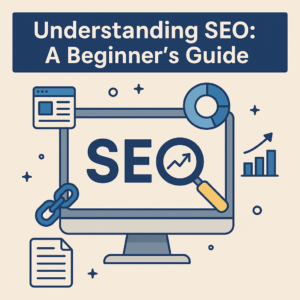The IoT Security Market: Safeguarding a Connected World
The Internet of Things (IoT) has evolved from a mere technological curiosity into a foundational element of modern society. It...

The Internet of Things (IoT) has evolved from a mere technological curiosity into a foundational element of modern society. It has become an integral part of various industries such as healthcare, automotive, manufacturing, and smart homes, all contributing to the increasing reliance on connected devices. These devices range from simple sensors to complex systems that gather, analyze, and transmit data in real time. However, as the adoption of IoT technology continues to surge, so does the need for effective security measures. The security of these devices and the data they collect has become one of the primary concerns for businesses, governments, and consumers alike. The IoT security market has become a pivotal segment within the broader cybersecurity industry, as it plays a critical role in protecting data, privacy, and system integrity. The IoT security market size surpassed USD 21.23 Billion in 2024. With a projected CAGR of 21.80% from 2025-2034, the global market is expected to reach USD 152.55 Billion by 2034. This growth reflects not only the increasing number of connected devices but also the rising awareness regarding the security challenges posed by IoT technology.
The Rise of the IoT and Its Security Challenges
The IoT has brought about significant changes in how industries operate, offering improved efficiency, better resource management, and enhanced customer experiences. However, the proliferation of IoT devices has introduced several security vulnerabilities. These devices, often interconnected and operating in real-time, provide an attractive target for cybercriminals. The scale of potential breaches grows exponentially as the number of connected devices increases. From smart home appliances and wearables to industrial control systems, each device represents a potential entry point for hackers. Many IoT devices have been designed with limited computational resources, making it difficult to implement advanced security protocols. Moreover, the sheer volume of devices in use creates a complex security environment that is difficult to monitor and manage.
Security risks related to IoT are multifaceted. One of the most common threats is unauthorized access to the devices, which can lead to data theft, manipulation, or even the hijacking of the devices for malicious purposes. For example, a hacker might gain access to a smart home security system, disable alarms, or use the device to spy on the homeowner. In industrial environments, compromised IoT devices could disrupt critical infrastructure, leading to financial losses or safety hazards. Additionally, the data that these devices generate is valuable, and cybercriminals may target it to exploit personal information or intellectual property.
The Growing Importance of IoT Security
The increasing prevalence of IoT devices has made security a top priority for organizations. According to various industry reports, including insights from the International Data Corporation (IDC) and Gartner, the number of IoT devices worldwide is expected to exceed 75 billion by 2025. This explosion in connected devices is expected to further expand the attack surface for cybercriminals. Consequently, the demand for IoT security solutions has surged, driving the growth of the IoT security market.
Effective IoT security goes beyond simply protecting individual devices. It involves securing the entire IoT ecosystem, including the devices, networks, data storage, and cloud-based services that support them. This is essential not only to protect against cyberattacks but also to ensure compliance with privacy regulations such as the General Data Protection Regulation (GDPR) in Europe or the California Consumer Privacy Act (CCPA). These regulations mandate stringent data protection measures and impose heavy penalties for non-compliance. Thus, organizations must ensure that their IoT devices and systems are secure by design.
Key Drivers of the IoT Security Market Growth
The growing adoption of IoT technology across various industries has led to an increasing demand for security solutions. Several key factors contribute to the rapid growth of the IoT security market:
- Rising Cybersecurity Threats: As IoT devices become more prevalent, so do the number of cyberattacks targeting them. The potential impact of a security breach in an IoT system is immense, and as the world becomes more connected, the risks associated with these breaches escalate. High-profile attacks on IoT devices, such as the Mirai botnet attack, which utilized unsecured IoT devices to launch a massive DDoS attack, have brought global attention to the issue. This has driven organizations to prioritize IoT security.
- Regulatory Compliance: With the growing concern over data privacy and security, governments around the world are implementing regulations that require businesses to secure their IoT devices. These regulations mandate certain levels of protection for IoT devices and systems, creating a need for IoT security solutions to ensure compliance. Businesses that fail to comply with these regulations face penalties and reputational damage, which adds another layer of urgency to addressing IoT security.
- Increasing Complexity of IoT Networks: As IoT systems grow in size and complexity, managing their security becomes more challenging. The interconnected nature of IoT devices means that vulnerabilities in one device can compromise the entire system. IoT security solutions are therefore essential to protect against attacks that can spread across multiple devices and networks.
- Advancements in Security Technology: Over the years, there have been significant advancements in IoT security technologies, such as blockchain, artificial intelligence (AI), and machine learning (ML). These technologies are being integrated into IoT security solutions to enhance threat detection, automate responses, and provide more robust protection for connected devices. As these technologies continue to evolve, they will play a crucial role in the growth of the IoT security market.
- Consumer Awareness: As consumers become more aware of the potential risks associated with IoT devices, there is increasing demand for secure products. Consumers are now more likely to consider the security features of a device before purchasing it, and they expect manufacturers to prioritize data protection. This shift in consumer behavior is driving the IoT security market as manufacturers seek to meet these expectations and avoid negative publicity.
Key Segments of the IoT Security Market
The IoT security market can be segmented based on various factors such as deployment model, security type, application, and geography. These segments help in understanding the scope and dynamics of the market:
- By Security Type: The security solutions in the IoT security market can be broadly classified into several types:
- Network Security: Protects IoT devices from unauthorized access and malicious attacks over the network.
- Endpoint Security: Focuses on securing individual IoT devices and preventing breaches at the device level.
- Application Security: Ensures the security of the software and applications running on IoT devices.
- Data Security: Safeguards the data generated by IoT devices, both in transit and at rest.
- Cloud Security: Secures the cloud-based infrastructure that stores and processes data from IoT devices.
- By Deployment Model: IoT security solutions can be deployed in various ways, including on-premises, cloud-based, or hybrid models. The choice of deployment model depends on factors such as the organization’s size, the type of devices used, and the security requirements.
- By Application: IoT security solutions are deployed across various industries, including healthcare, automotive, manufacturing, energy, and smart homes. Each industry has unique security needs, which drives the demand for tailored IoT security solutions.
- By Region: The IoT security market is growing globally, with North America, Europe, and Asia-Pacific being key regions driving market expansion. North America is expected to maintain its dominance due to the rapid adoption of IoT technology in industries like healthcare, automotive, and manufacturing. However, the Asia-Pacific region is expected to witness the highest growth rate due to the increasing adoption of IoT in emerging economies such as China and India.
Challenges in IoT Security
Despite the advancements in IoT security technologies, there are still several challenges that need to be addressed:
- Device Fragmentation: The IoT ecosystem comprises a wide variety of devices with different capabilities, operating systems, and security features. This fragmentation makes it difficult to implement uniform security measures across all devices, increasing the complexity of securing IoT networks.
- Limited Device Resources: Many IoT devices, particularly those used in consumer applications, have limited computational resources, making it challenging to deploy robust security features. These devices often lack the processing power to support advanced encryption and authentication mechanisms.
- Lack of Standardization: The IoT industry is still in its early stages, and there is a lack of universally accepted security standards. This lack of standardization creates inconsistencies in the security practices of manufacturers, leaving devices vulnerable to attacks.
- Privacy Concerns: IoT devices collect vast amounts of personal and sensitive data, raising concerns about privacy. Consumers are increasingly worried about how their data is being used and who has access to it. Manufacturers need to ensure that their devices comply with privacy regulations and that they protect consumers’ personal information.
Future Outlook of the IoT Security Market
The IoT security market is poised for substantial growth in the coming years, driven by the increasing number of connected devices, the growing complexity of IoT systems, and the rising threats to cybersecurity. With businesses and consumers increasingly prioritizing security, the demand for robust IoT security solutions will continue to rise.
As the IoT ecosystem becomes more interconnected, the importance of comprehensive, integrated security solutions will only grow. Technologies such as artificial intelligence and machine learning will play a key role in enhancing threat detection and response times, while blockchain may offer new ways to secure IoT networks and devices. The future of IoT security will be shaped by innovations in these areas, as well as the development of global standards and regulations that ensure the security and privacy of IoT devices and data.
Media Contact
Company Name: Claight Corporation
Contact Person: Chander Deep, Corporate Sales Specialist
Email: [email protected]
Toll Free Number: +1–415–325–5166 | +44–702–402–5790
Address: 30 North Gould Street, Sheridan, WY 82801, USA
Website: www.expertmarketresearch.com






